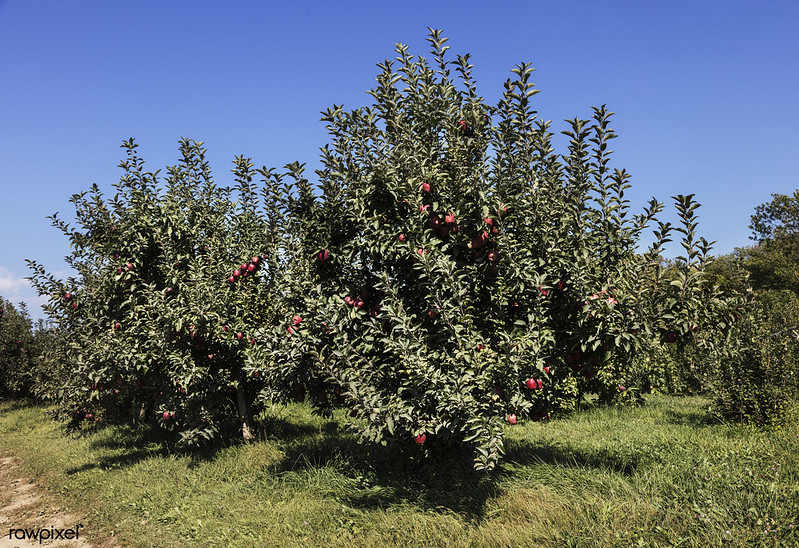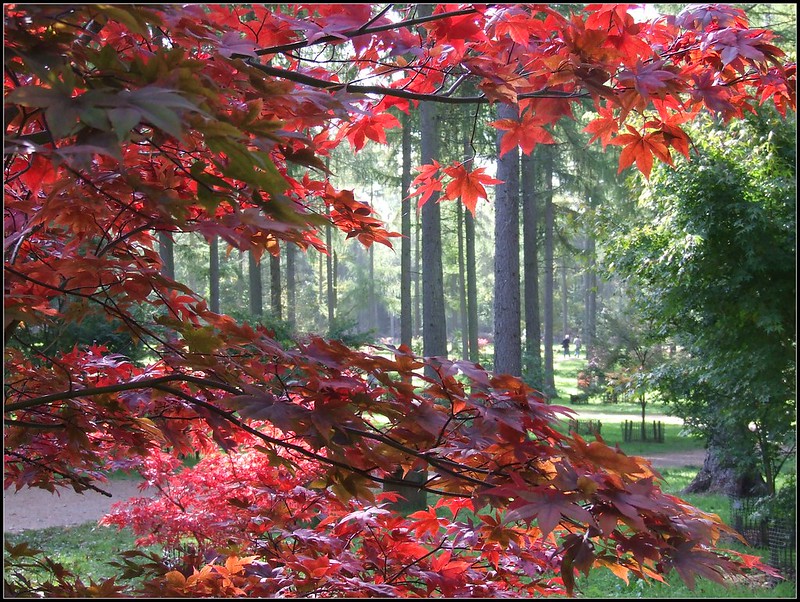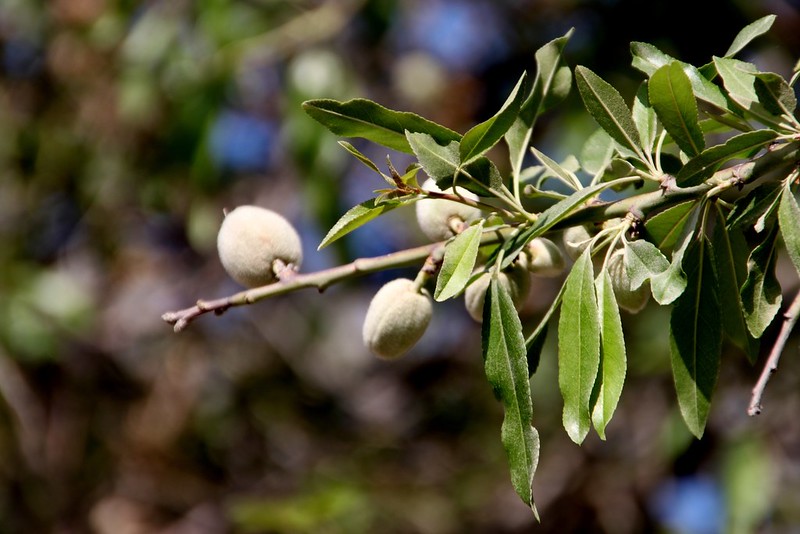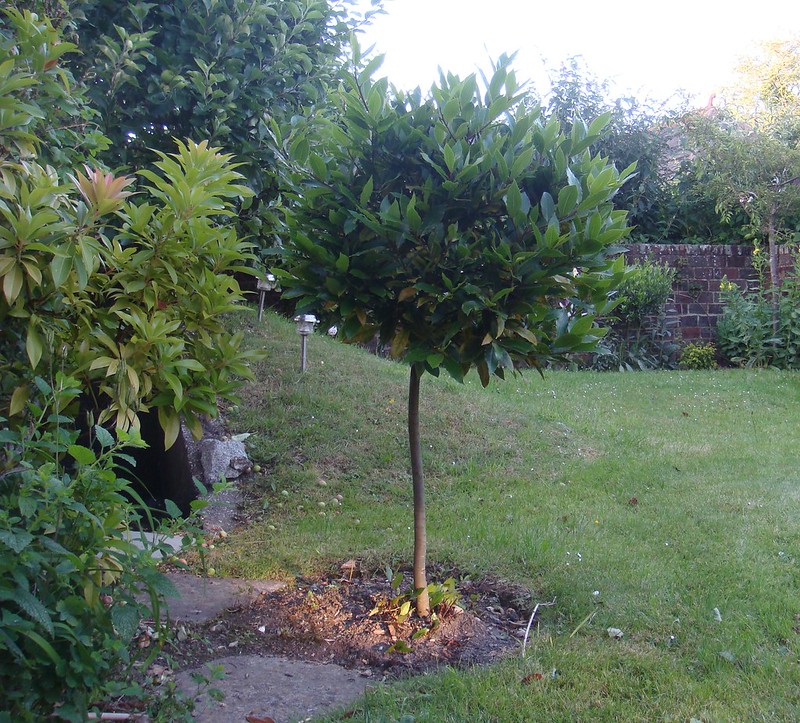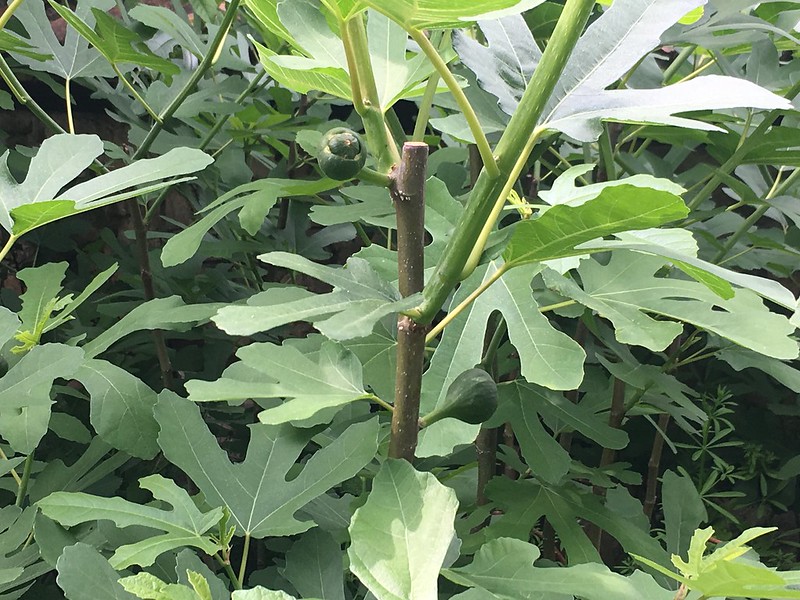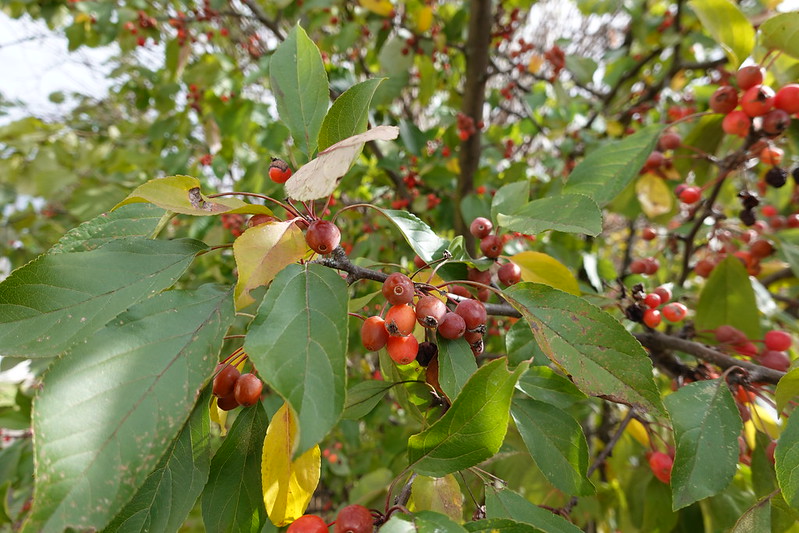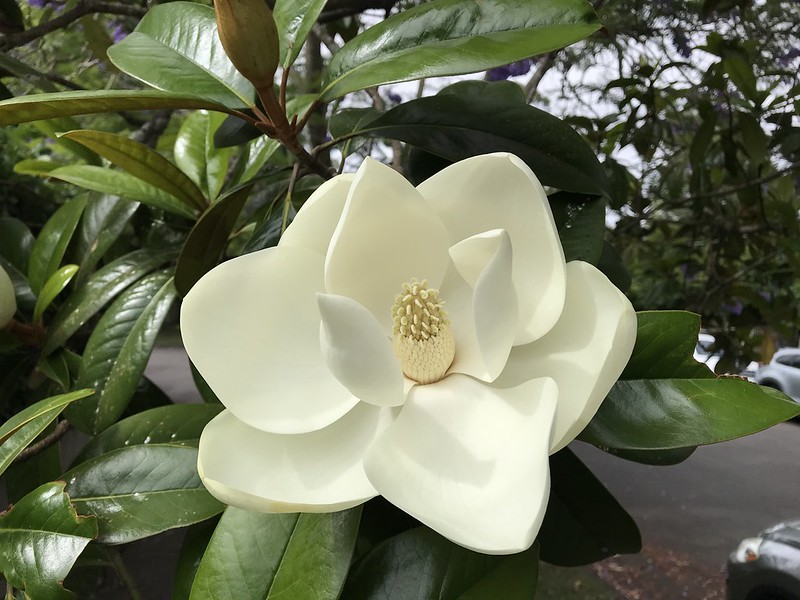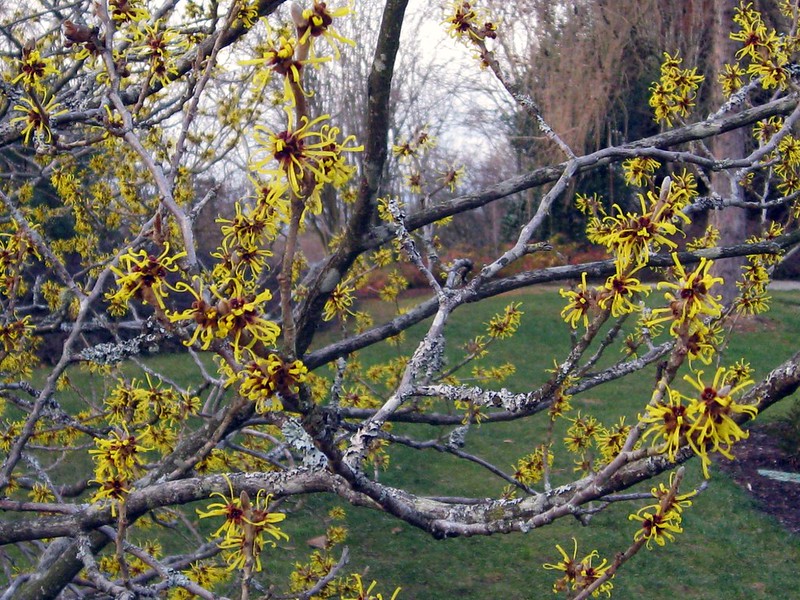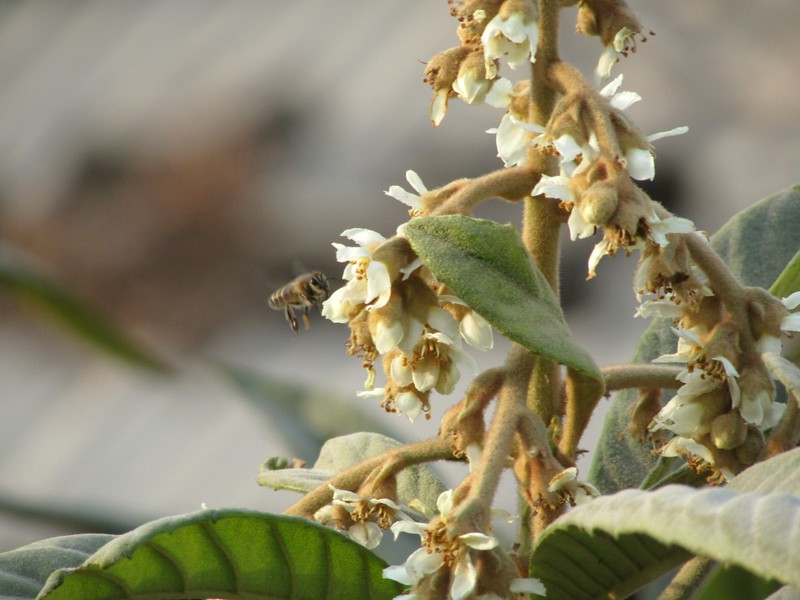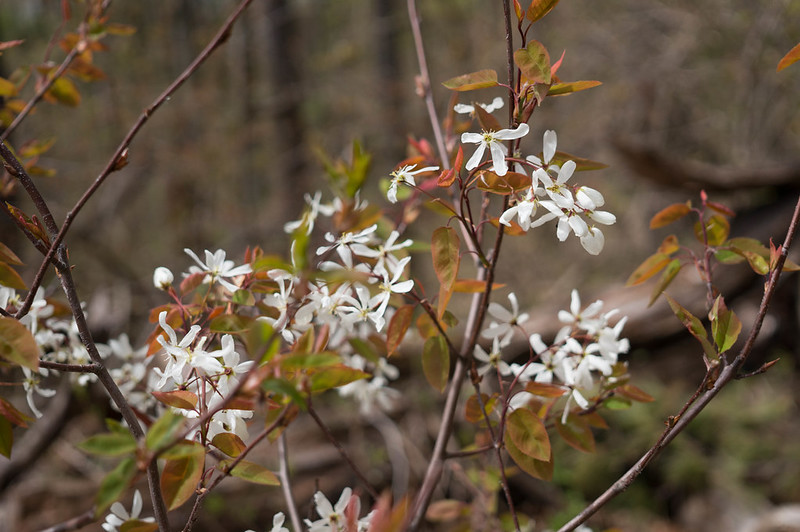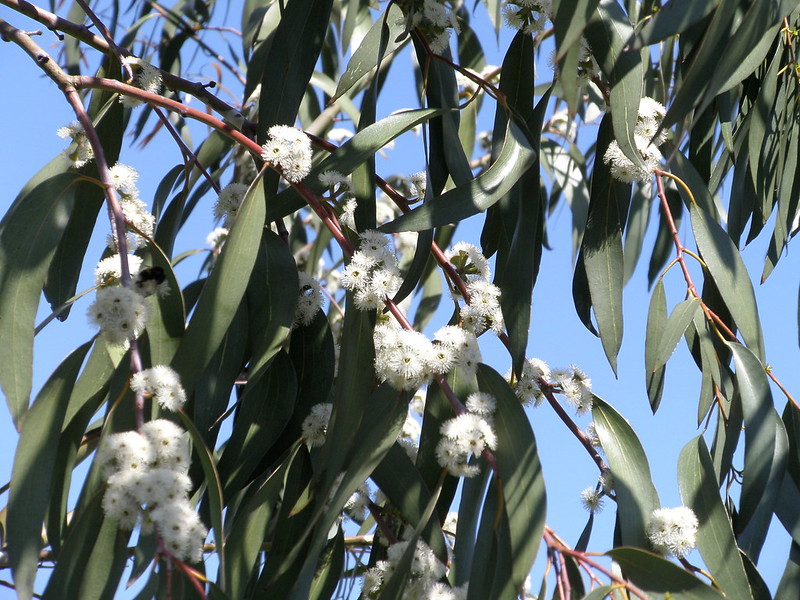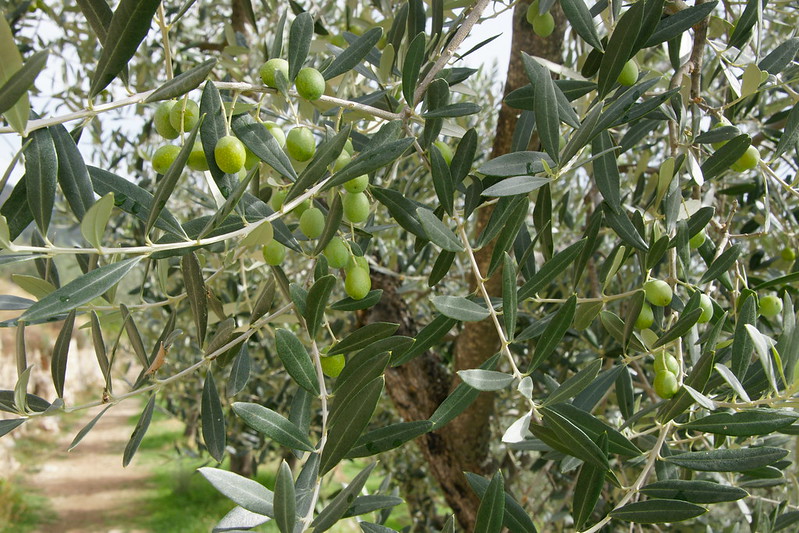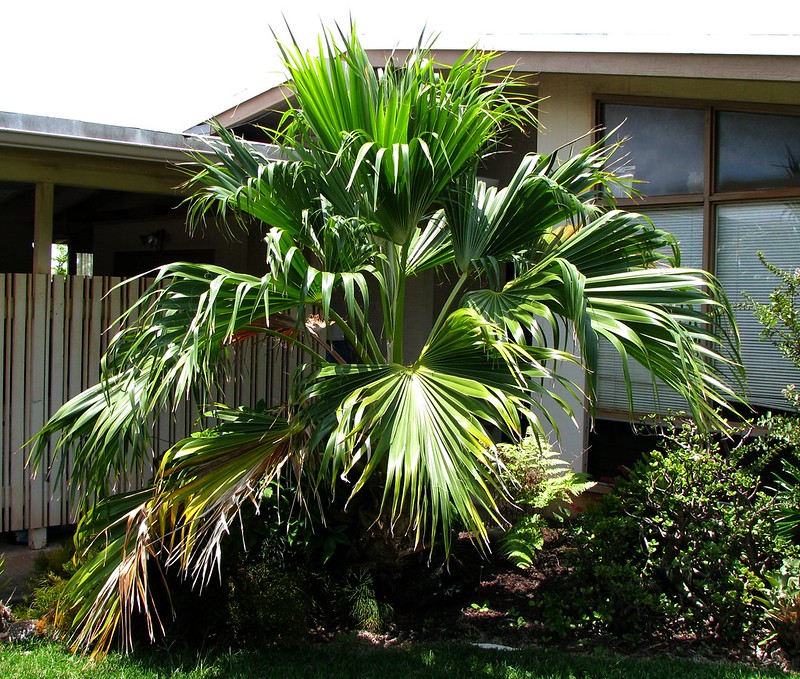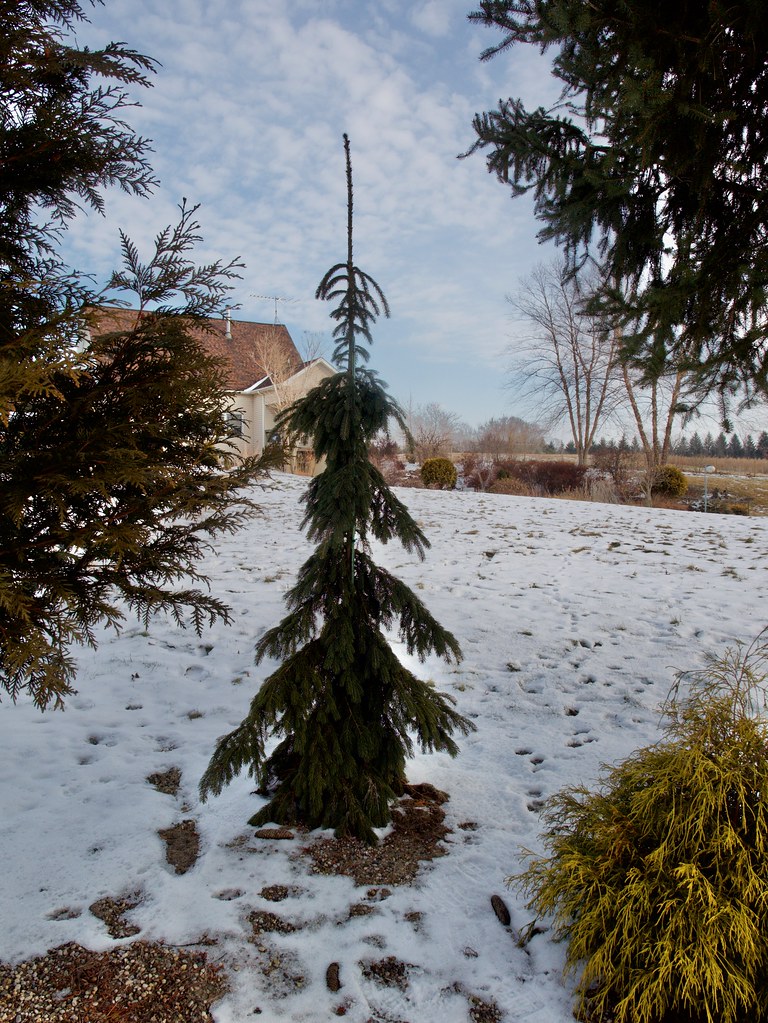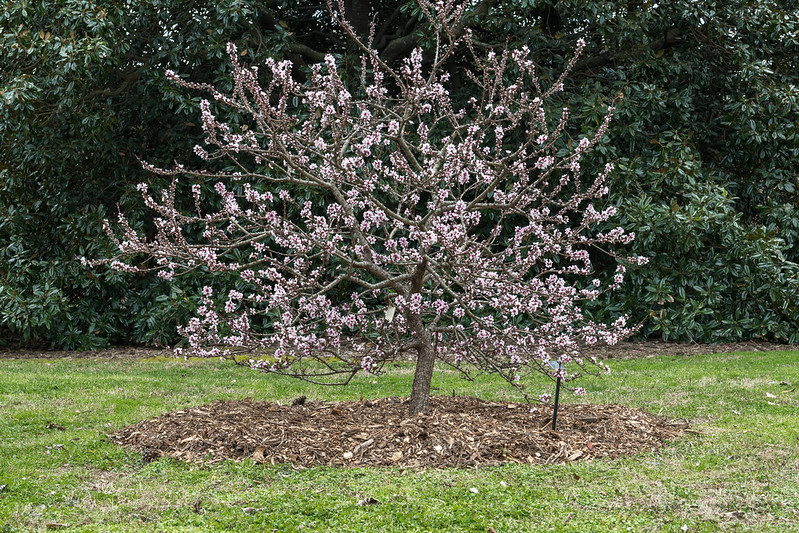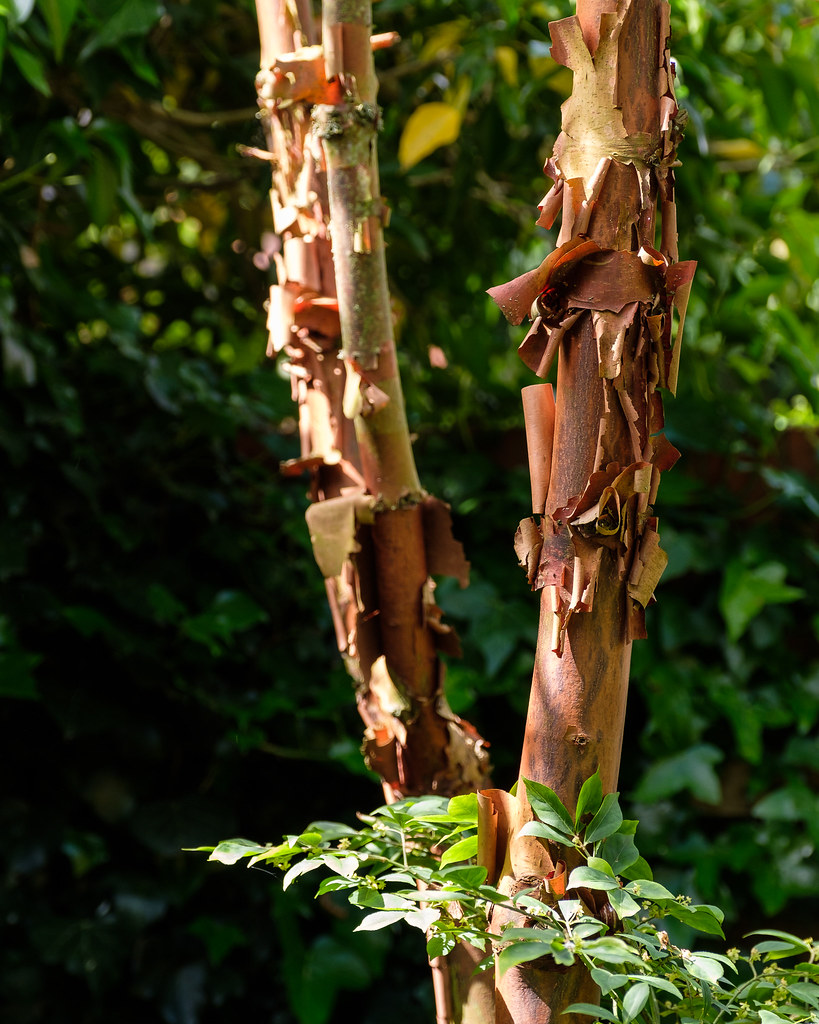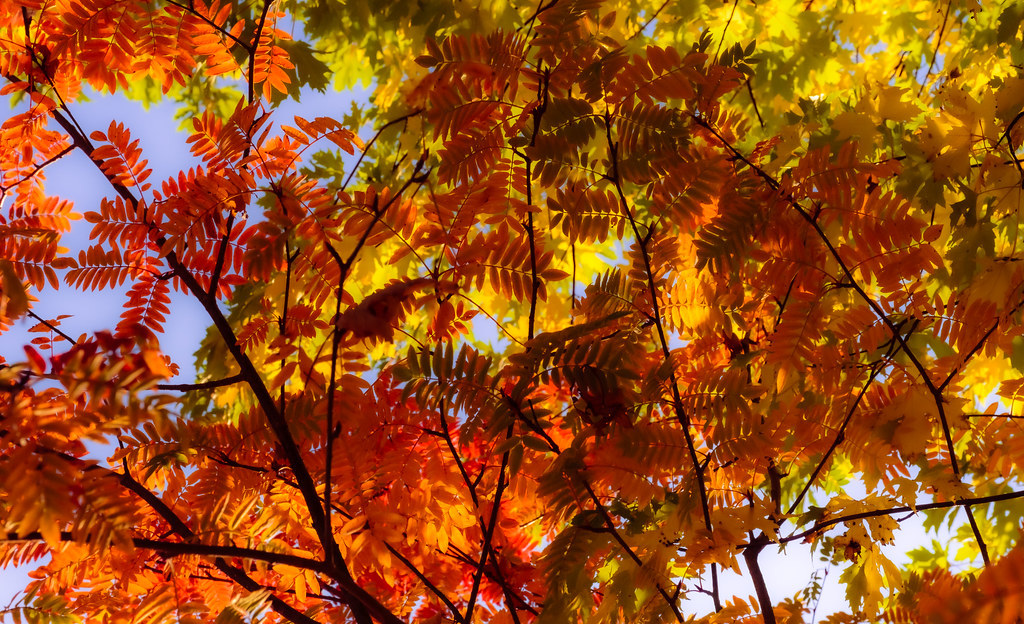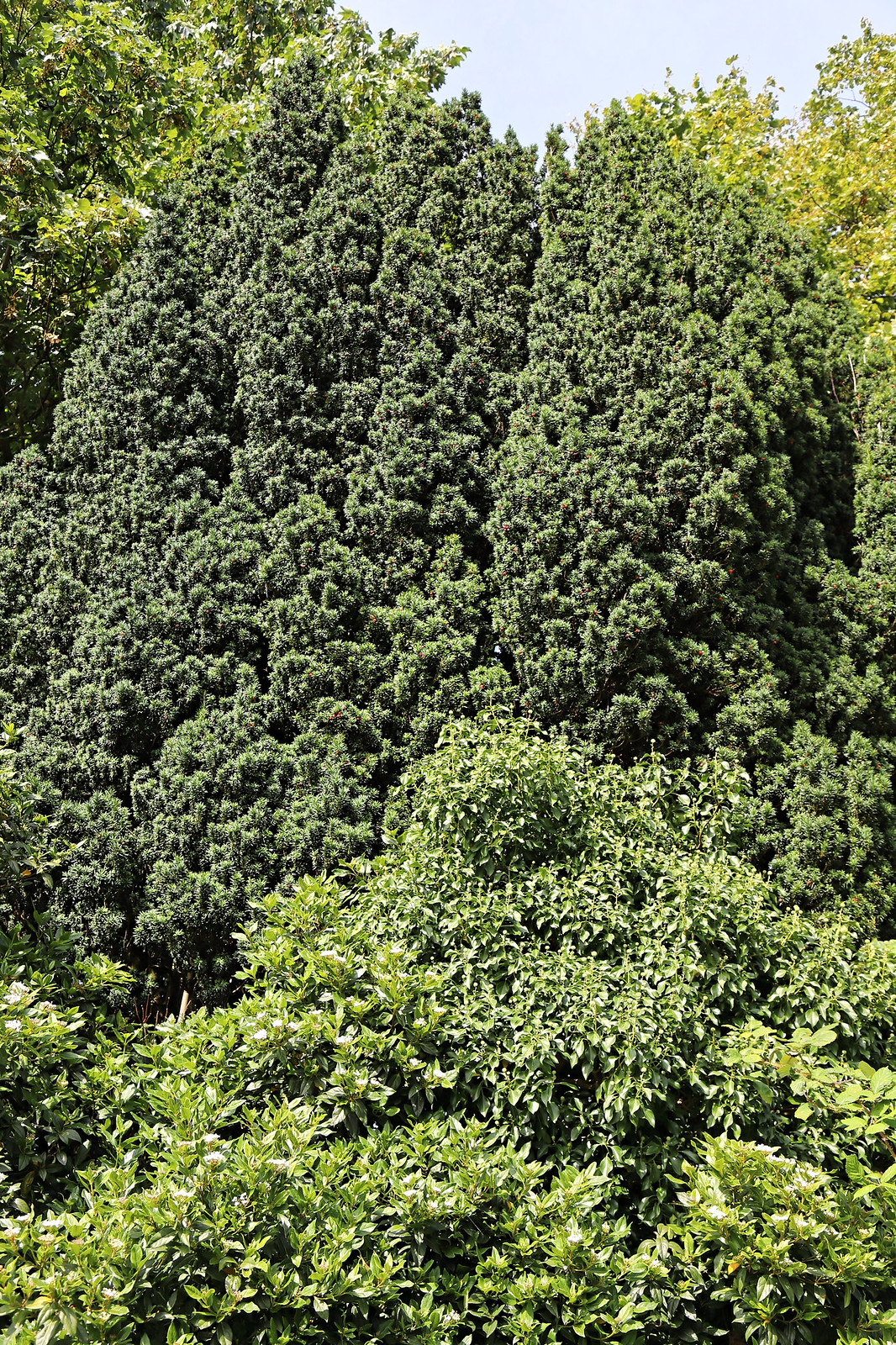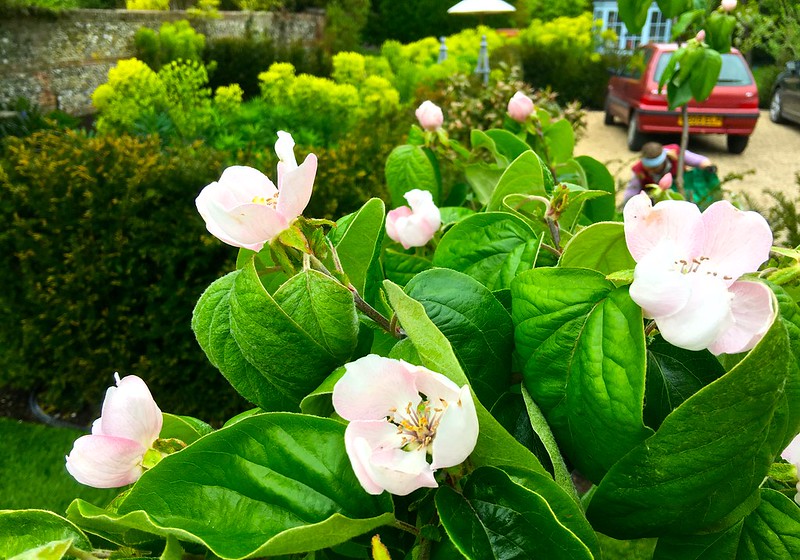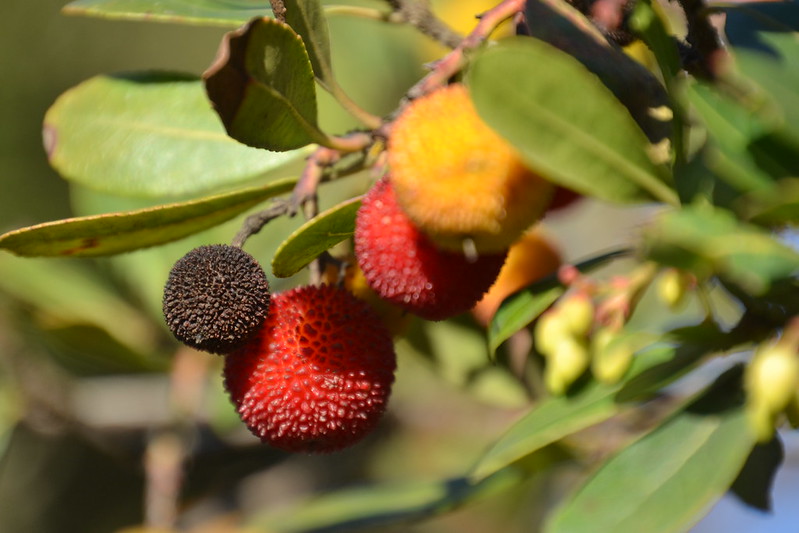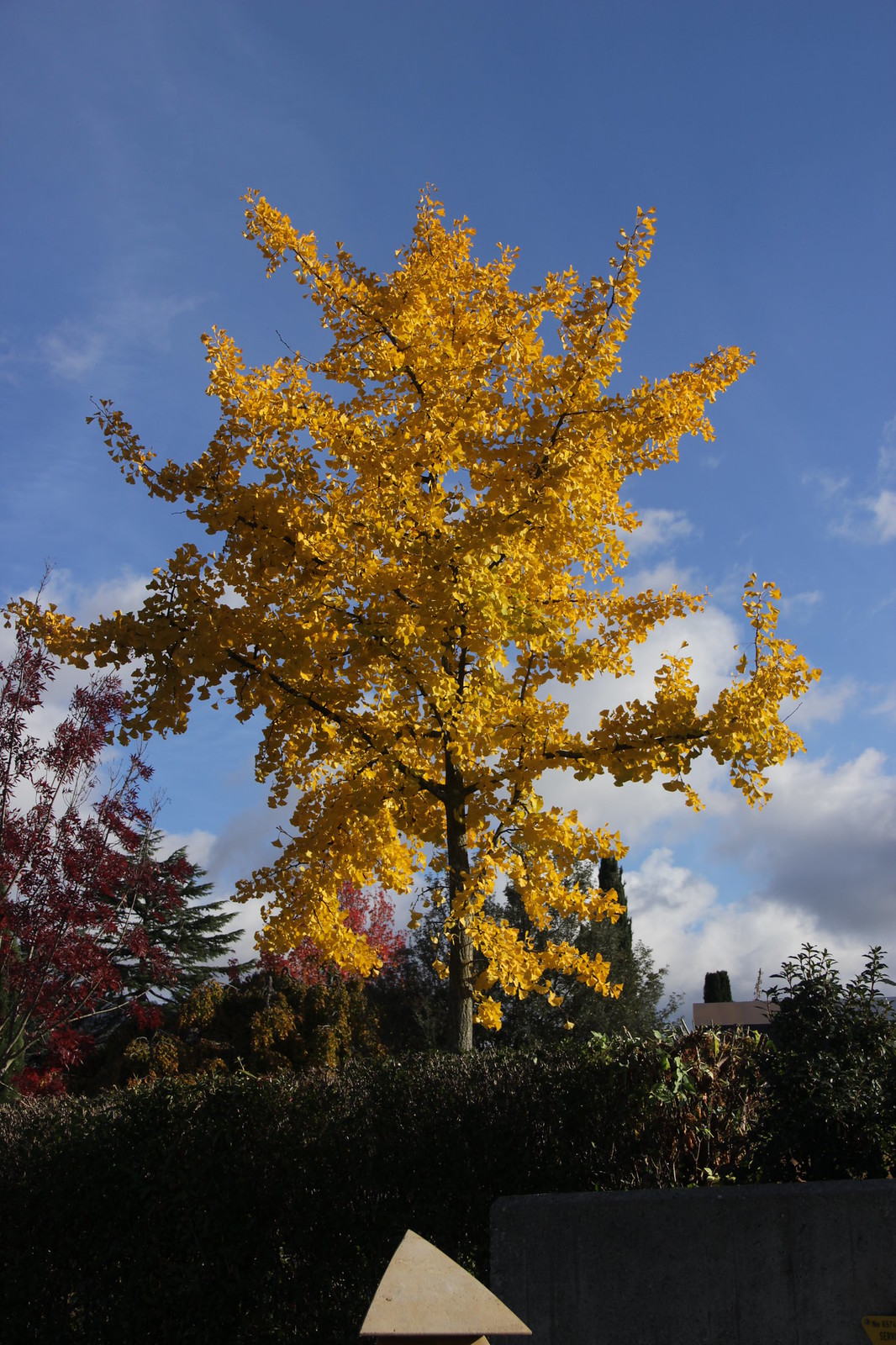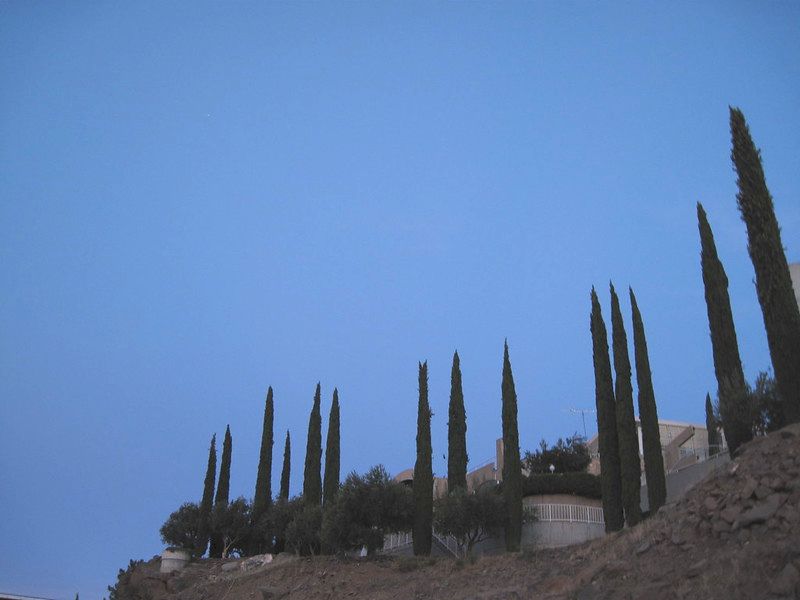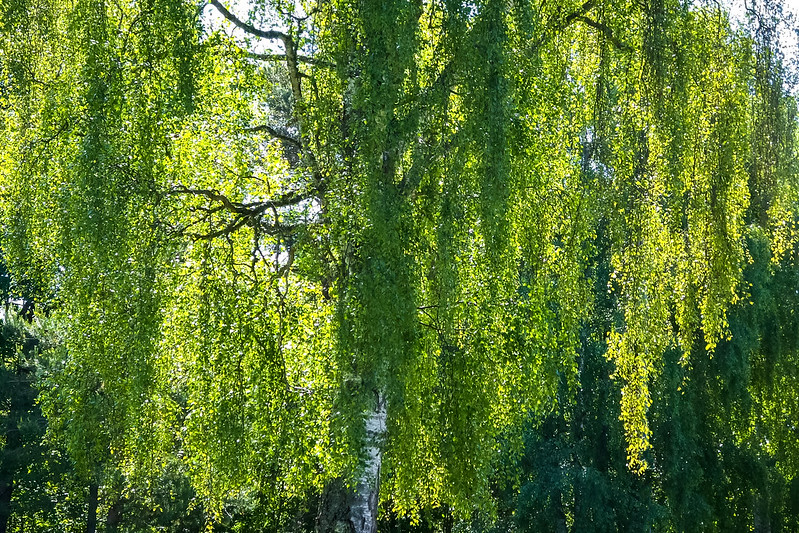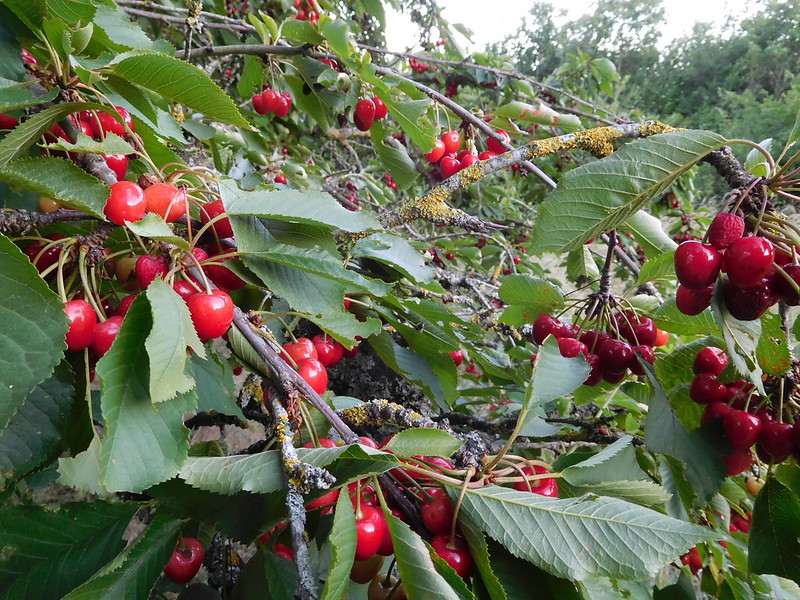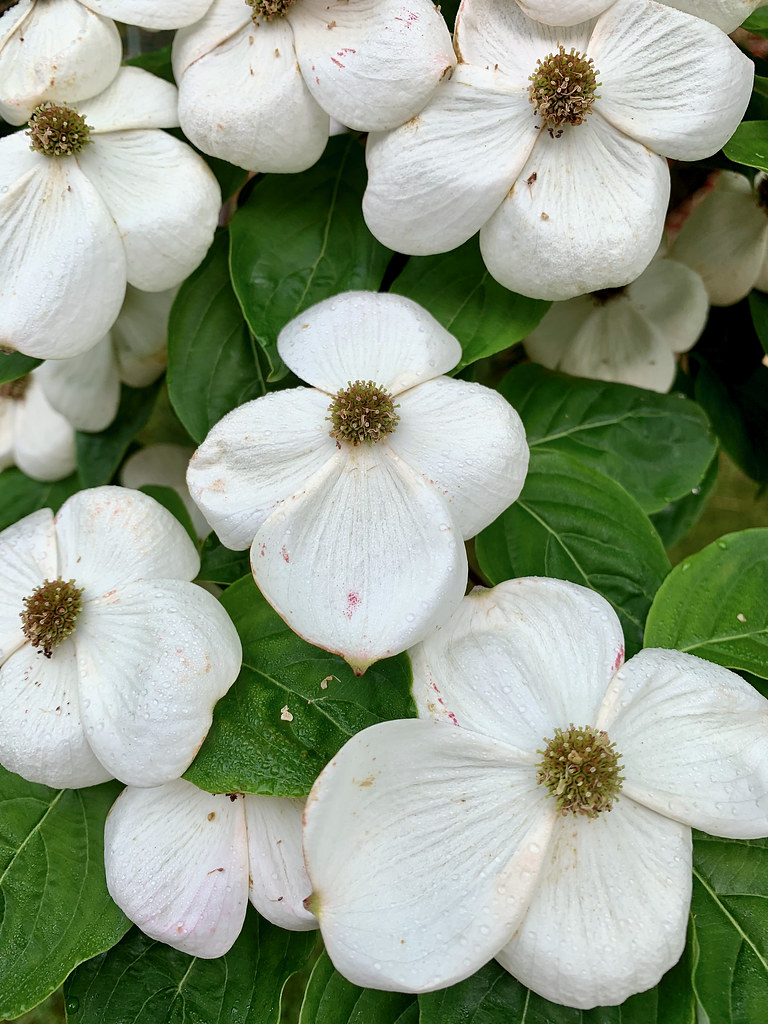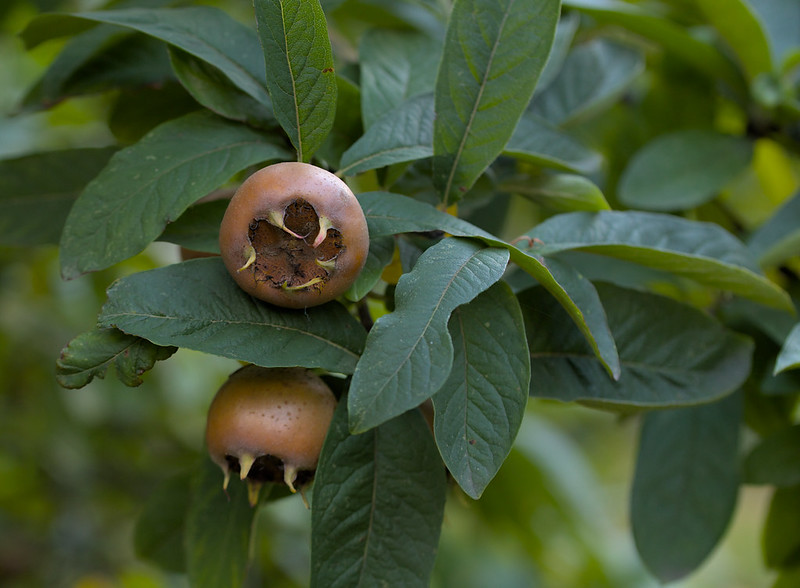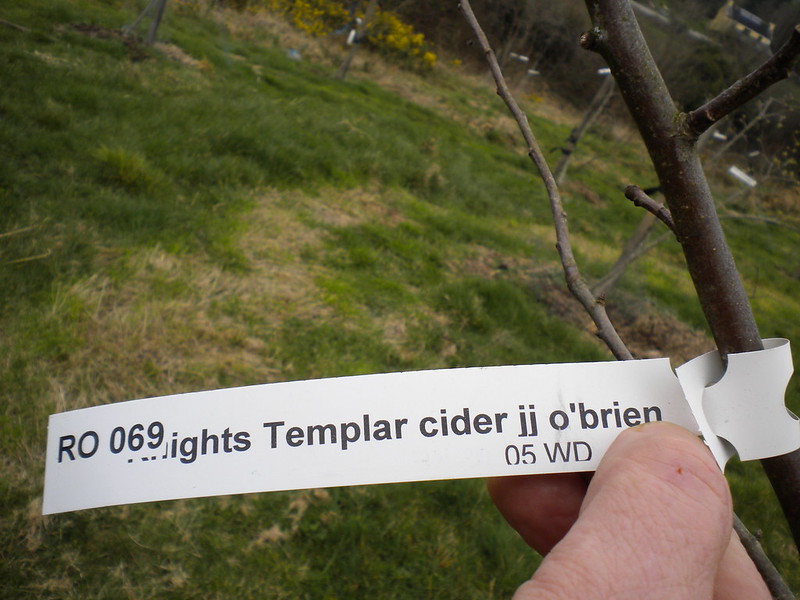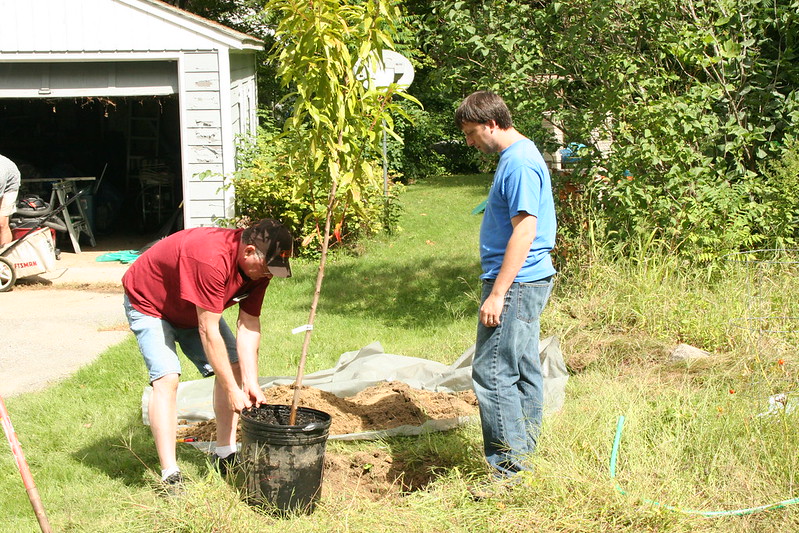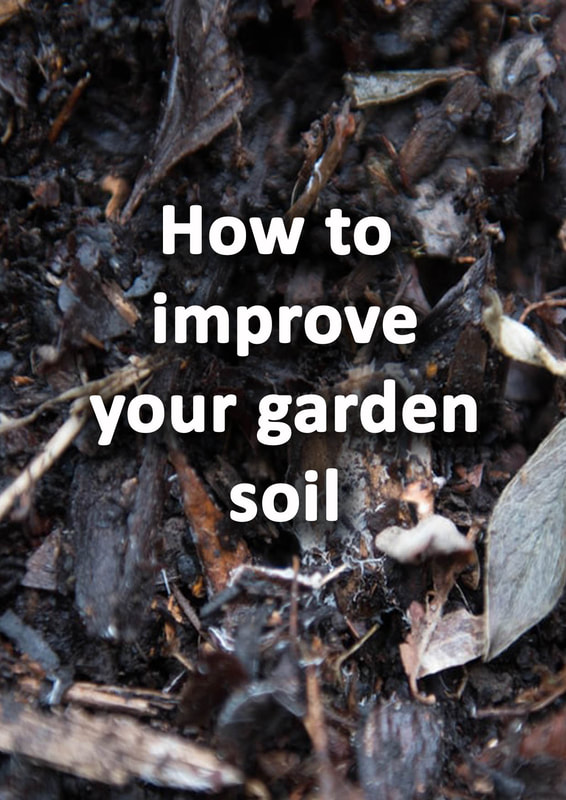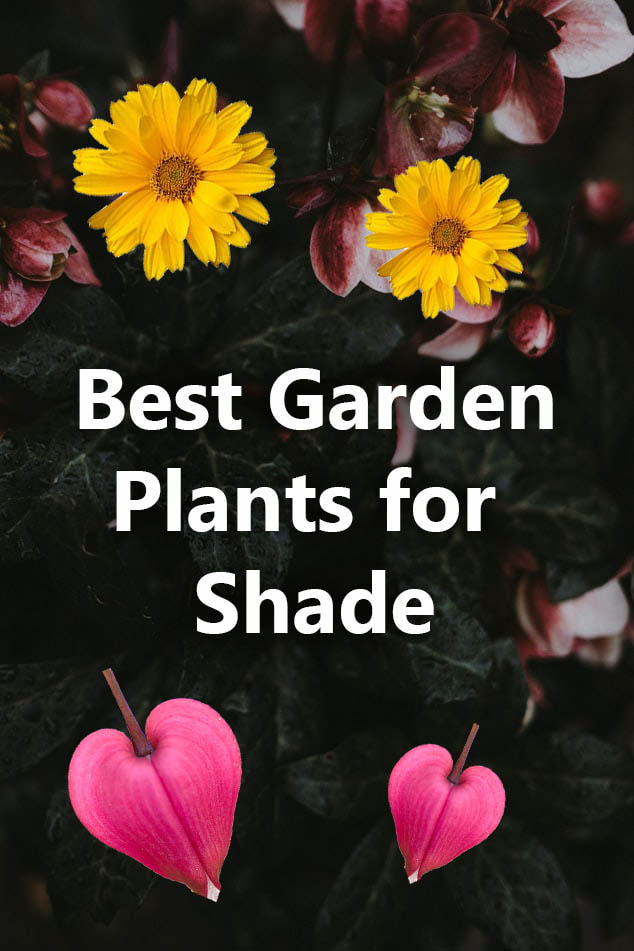|
This article contains affiliate links
Even in more compact gardens trees can offer privacy, wildlife habitat and seasonal interest. It has also been shown that trees can help cool areas in summer and help insulate in winter. They can boost our mood and offer some vertical interest in the garden.
Planting trees in a small garden however can be a tricky business. A typical mistake made by many is simply not visualising what their newly planted tree will look like in 10 years time. Visualising the eventual height and spread of a tree is essential in the best of situations but more so in smaller gardens. When planting a tree in a smaller garden consider the impact on the surrounding ground. Even small trees typically shade out other plants and can form compacted root masses under the soil. Nonetheless even in the smallest of gardens the benefits usually outweigh the negatives if you select the right tree for the right situation. Small trees generally should be planted no closer than 4 metres from surrounding buildings. In this article I explain the considerations of planting smaller trees and list the top 25 trees for smaller sites. Dwarf varieties
It is beneficial to realise that many garden tree species now also have dwarf varieties. These can be bred specifically to a smaller size or grafted onto a smaller rootstock. This is particularity the case with fruit trees including Apples, Pears, Plums, Peaches and some nut varieties.
This greatly aids harvesting and maximises sun exposure in orchard plantings. There are many dwarf varieties of more traditional landscaping trees. When selecting dwarf trees make sure they come from a reputable merchant and have the eventual ‘height’ and ‘spread’ marked clearly on the label. Root restriction
When planting a tree it is important to recognise that not all situations are created equal. Root restriction in trees can produce much smaller specimens than those with extensive root runs.
This can be observed in its most extreme case in bonsai trees. When tree roots are restricted within a pot, raised bed or sunken container a tree will restrain its own growth. This can be easily implemented into smaller gardens but it is important to recognise trees grown this way will need more intensive care. In these situations irrigation and feeding may be required to keep a tree healthy especially during the growing season. Japanese Acer
The Japanese Acer is a beautiful tree ideal for small gardens. Their form takes the shape of a larger, more established tree within the landscape. This has traditionally made them a favourite of Japanese style gardens and Bonsai.
Acers generally prefer a sheltered shady garden and are very tolerant of cold conditions. These trees have attractive, serrated foliage with dazzling autumn colours of reds, oranges and yellows. These slow growing trees can reach up to 8 metres in 50 years but typically reach around 4 metres high. Almonds
Originating from Iran growing almonds has been more associated with Persia and the Mediterranean. However given the correct conditions they can thrive and produce fruit in colder climates.
However producing nuts is not all these trees have going for them! Almonds have the most vibrant early spring blossom which is a delight so early on in the season. All they need is full sun and a sheltered position, perfect for smaller gardens. They typically reach about 5 metres high in a garden setting. If you are in a colder region try varieties such as ‘Ingrid’. Bay Trees
For the kitchen gardener Bay trees are a must but having aromatic leaves is not their only attribute.
Bays have attractive, glossy, evergreen foliage and can be clipped into formal shapes such as boxes. They can also be grown into an attractive single stemmed, small tree. These can be formed into a classic lolly pop shape perfect for screening away nosey neighbours. Left to grow into a larger specimen they can reach around seven metres in height. They like a rich, well drained soil and a sheltered, sunny position. Fig trees
Fig trees are an absolute delight and bring a touch of the exotic into the garden. With their tropical looking lobed leaves and syrupy fruit it is surprising just how hardy these small trees are. Fig trees can be pruned and trained into pretty much any shape.
In colder climates they are encouraged to grow on a sunny wall to maximise fruit ripening. However they can be trained into a very effective single stemmed small tree. With regular pruning and training fig trees can take on a very attractive form in a small garden. Make sure these trees have a level of root restriction, a free draining soil and full sun. Crab apple
Crab apples are usually met with some confusion as fruits are so small to make much use of. However the crab apple has cemented itself firmly into one of the top landscaping trees for seasonal interest.
As the fruits are much smaller this results in there being more of them. Consequently this means in spring they are awash with beautiful blooms which can light up the garden early in the spring. Clusters of fruits form in the summer and can remain on the tree well into the winter months. The clusters of circular fruit come in the most striking of colours. Reds, yellows and oranges help to inject vibrancy during the dead of winter. Crab apples not only look good they provide food for wildlife in leaner months. These trees typically grow to around 4 metres tall. Magnolia
Magnolias are a complete novelty in the smaller garden. Not only are these compact trees beautiful they are also a living fossil.
Magnolias have been found within the fossil record going back millions of years even to a time before bees existed. Magnolias are often appreciated for their large erect flowers which appear before leaves in the springtime. It is said that these flowers historically evolved to attract beetles for pollination. This extremely interesting tree also has large, glossy foliage giving it an exotic look. Garden magnolias typically grow to around 5 metres in height. Witchhazel
Often thought of as more of a large shrub than small tree Witch-hazel is a beautiful addition to any garden.
Traditionally originating from North America this plant was used medicinally for many years. It has a natural multi stem habit however it can be trained into a single stemmed tree. The great thing about this tree is it provides spider like winter blooms which can be yellow, orange, red or dark brown. The blooms have an intense aroma which can carry some distance from the canopy. This tree prefers acidic to neutral soil and likes a full sun or partially shaded position. With great autumn colour it grows to an average height of 6 metres. Loquats
Loquats are small trees native to China and Japan. They generally live in cool hilly areas making them perfect for a wide range of garden conditions.
These trees have aesthetic, glossy, spear, blade shaped leaves which have historically been used to make a tea. However the most prized part about this species is the small citrus like fruit. These can vary in colour from yellow to orange to red and make the tree look particularity attractive. Loquats are evergreen which mean they look good all year round. They do prefer a full sun position and a rich soil. These trees are only hardy to minus 11 Celsius so ideal for small urban gardens. Amelanchier
Like Witchhazel Amelachier is also thought of as a large shrub than small tree but can be referred to as either.
These can be grown on a single stem and grown as a more standard tree as well as a multi stemmed shrub. There are many variants of Amelanchier all of which are native to cool temperate ranges of the northern hemisphere. They have a delicate form with snowy white flowers in springtime. These slowly form small red fruits during the summer which turn purple in autumn. These trees have excellent autumn colour and prefer a well drained loamy soil. Garden varieties can grow up to 8 metres tall. Snow gum
Snow gum or Eucalyptus niphophila is an evergreen, small tree native to Australia. Like all Eucalyptus it has aromatic, blue, grey foliage and attractive flaking bark.
This trees canopy unlike most temperate climate trees has a less dense form. This gives it a very airy canopy which rustles in the breeze. The snow gum also produces clusters of small white, yellow and red flowers. This tree is perfect for small gardens preferring good shelter, full sun and good drainage. This tree will reach an eventual height of around 7 metres tall. Olive trees
Olives are trees classic of the Mediterranean and arid regions of North Africa and the Middle East. These remarkable trees can live for thousands of years and survive prolonged periods of drought.
Surprisingly to many these trees can grow quite happily in colder climates as long as they do not become waterlogged. Their love of well drained conditions makes them perfect for raised beds and garden pots. These trees favour the sheltered conditions of small gardens as long as they are given full sun. Olive trees are very slow growing but eventually reach a height of around 6 metres tall. Dwarf fan palm
The dwarf fan palm also known as the European fan palm or Chamaerops Humilis is a hardy palm suitable for colder climates.
It can tolerate temperatures down to around -8 Celsius and thrives in well drained sunny gardens. Due to the well sheltered nature of smaller gardens they offer the perfect conditions for this species. This palm can have a dramatic impact in tropical as well as Mediterranean gardens. The Dwarf fan palm is generally not fussy of soil types and can reach an eventual height of 3 metres tall. Weeping Alaskan Cedar
Also known as ‘Green Arrow’ the Weeping Alaskan Cedar is a tall, narrow coniferous tree with a beautiful weeping form. Due to its thin and narrow trunk it is the perfect tree for small gardens Which want to add some height to their borders.
The Green Arrow is a slow growing tree which holds an elegant form with horizontal, weeping, branches. Being evergreen it will still offer interest in winter and will generally end up around 8 metres tall. Peaches
If there is one great reward in gardening it is biting into a ripe peach straight from your own tree. This fruit is a taste of the exotic and represents the true taste of summer.
Peaches are more than possible to grow well in even a temperate garden! All they need is a sunny, sheltered spot and preferably with a warm micro climate. Peaches produce the best fruit when they have been grown near a south facing wall or besides a warm patio. Various dwarf rootstocks have enabled peach trees to be grown to very small sizes. Some of these can even fruit in a pot on a patio. However if you have well drained soil and a sunny spot this can be the perfect tree for a small garden. An average peach tree will reach around 3 metres tall. Acer grisium
Also known as the paper bark maple Acer grisium has a beautiful, reddish brown papery bark. This bark seems to constantly peel away from the trunk creating a ribbon like effect. This tree has unusual three, lobed, leaves which boast exceptional autumnal displays of yellows, oranges and reds. Native to the mountainous regions of central China this tree is extremely cold tolerant. It prefers a well drained loamy or chalky soil and reaches a height of around 10 metres.
Rowan
The Rowan or Mountain Ash is a small tree native to cool regions of the northern hemisphere.
They have lobed and sometimes serrated leaves which have great autumn colour. In spring the tree is covered with flowers which soon turn into fruits which become bright red in late summer. The rowan is exceptionally tolerant of cold, exposed and even wet conditions. This tree although typical of wild forests of Eurasia is also a decorative species which can be appreciated in both public and private gardens. Rowans have great wildlife value and reach a height of around 8 metres. Japanese plum yew
The Japanese plum yew is a small tree which has a circular, conical, growing habit. The foliage is remarkably similar to native European yew but it is smaller. Japanese plum, yew has evergreen foliage and large berries which are edible.
In fact in Japan this tree is actually cultivated specifically for the fruit. They can be pruned or left to grow in their natural habit. These trees get to an eventual height of around 4 metres and like a moist but well drained soil. Quince
Quince trees grow to around 8 metres tall and are closely related to both apples and pears. They produce large, bright yellow fruits which look very similar to pears.
These fruits not only look amazingly ornamental they also taste great. Typically these can be turned into jellies and preserves or sometimes summer drinks. The quince tree has also been grown as an ornamental tree in public parks and gardens for centuries. In the spring time its charming flowers with large petals cover its foliage. These trees are perfect for small gardens and prefer a sunny position. Strawberry tree
The strawberry tree is surprisingly not very well known even though it has so many great attributes. Firstly this small tree or large shrub is evergreen so it generally looks good all year round.
It has dark green; glossy leaves about 3 inches long with a slightly serrated edge. In spring it produces attractive white flowers which turn into fruit during the summer. By the end of summer these have turned into large, sweet strawberry like fruits which are delicious to eat. The strawberry tree does like acidic soil so if your soil type is alkali you may need to add ericaceous compost. Being native to southern Europe it is tolerant of cooler temperate climates. Gingko biloba
Also known as the maiden hair tree the Gingko biloba is an ancient genus of tree which dates back over 200 million years. The tree has very unusual light, green leaves which make it stand out within the landscape.
It is exceptionally tolerant of pollution and soil type which has made it a popular in urban areas. The tree has many medicinal qualities and is generally pest free. It is on the slightly larger scale for a small tree reaching a height of around 15 metres. Mediterranean Cypress
Typical of Mediterranean countries such as Italy the Mediterranean Cypress is famous for its tall, slender, pencil like shape. This attribute has made it perfect for lining long avenues or streets.
The vertical line of this tree compliments the facades of buildings merging landscape and architecture. These trees are extremely drought tolerant and are not fussy about soil type. They do appreciate full sun and can get extremely tall for a small tree at around 25metres. They do however to not grow very wide so are still accepted as a relatively small tree. Weeping birch
The weeping birch is a smaller variant of the more familiar silver birch tree. The weeping birch has been specifically bred for its delicate, weeping or 'pendulous' characteristics.
This tree has become a staple for smaller gardens with its gentle movement in the breath and aesthetic habit. In winter the tree shows off its striking white, truck and branches. This tree is extremely tolerant of all soil types and climate. It is also extremely valued by wildlife. The weeping birch eventually reaches a height of around 8 metres. Cherry
There is nothing quite like picking your own fresh cherries off of your own back garden tree. These always taste much better than the supermarket ones if the birds don’t get there first.
Nonetheless cherries are perfect trees for small gardens rarely getting above 5 metres in height. They have a compact form and late winter brings masses of radiant flowers which give a real sense of spring time. Cherries like a deep, fertile soil but are reasonably cheap to buy and relatively easy to grow. Dogwood
Dogwoods are actually a group of small trees also known well by their Latin name Cornus. They are grown for a number of qualities and especially their aesthetic attributes.
Cornus have very vibrantly coloured stems which can make a real statement during the winter time. This has led to it becoming popular to grow them as small, coppiced garden trees. Coppicing is when trees are cut to just above the ground to encourage multiple stems. Dogwoods such as ‘Mid winter fire’ is especially striking resembling flames within the landscape. Dogwoods can also have attractive flowers, fruit and variegated foliage. Generally reaching a height of 12 metres they are large but can effectively be pruned, pollarded or coppiced for smaller gardens. Medlar
Medlar was a once more common fruit tree grown across Southern Europe and has been cultivated since Roman times.
They are particularly useful in a self sufficiency sense as the fruits are harvested and used in the middle of winter. Their traditional use is to make Medlar jelly which can be enjoyed with various foods including meats. If the fruits are not to your taste they are popular with wildlife and especially birds. The tree is full of attractive flowers in spring and remains a manageable, compact size. They rarely grow taller than 5 metres in height making them perfect trees for small gardens. Buying your trees
When buying your trees try to source them from a reputable horticultural supplier. Make sure the trees are clearly labelled with their name and eventual height and spread.
This way you can be sure you know what you are planting and what size outcome you can expect. Inspect the tree for any damage and make sure the root mass has not become too pot bound. Planting your trees
It is always best to plant trees when they are dormant in the winter. However you do not want the root ball to come into contact with frosty ground.
Therefore autumn and late winter is more desirable. Autumn is always the most beneficial unless the ground has a tendency to become waterlogged. When planting your trees make sure you dig a planting pit twice the size of the root ball. Work in lots of organic matter and work the soil into a loose crumbly texture. If the root mass has become pot bound prize away roots outwards so they grow into the new soil. Once the tree is sitting in the pit at its original soil level to the surrounding ground you can gradually backfill the soil.
Backfill the topsoil with some added compost and firmly consolidate the soil around the roots. For larger trees you may need to heel in the soil with your boots but don’t compact too much.
During this process take time to ensure the stem is as vertical as possible. It is beneficial to create a slight mound of soil all the way around the planting pit. This enables water to puddle and slowly absorb into the roots where it is needed. Water well and ensure that the watering well fills up and drains away at least twice. Depending on how exposed your location is and how big the tree is you may need to stake it. This is to stabilise the tree until it develops more secure tap roots. Ongoing care
Keep an eye on your tree as it grows and make sure to water it well during dry spells. Make sure the base is kept free of weeds and grass while it is establishing. The best thing to do is to apply a 50mm layer of bark mulch which also keeps the ground moist. Enjoy watching your tree develop! You will get so many years of pleasure out of it!
Further reading
For further reading on trees for small gardens we recommend this book by Simon Toomer
Are you undertaking a landscaping project yourself? If so you may find our recommended landscaping tools article and resource page helpful.
If you require landscape services please contact us. We cover Buckinghamshire as well as the whole Chiltern area. We also cover Hertfordshire, Oxfordshire Bedfordshire as well as London.
Some of our typical, local project locations include; Amersham, Aylesbury, Beaconsfield, Berkhamsted, Chalfont, Chesham, Gerard's Cross, Great Missenden, High Wycombe, Princes Risborough and Wendover.
1 Comment
|
The Author
|
Landscaping services across Buckinghamshire, Amersham, Aylesbury & High Wycombe
Hyde Heath, Amersham, Buckinghamshire |
|

